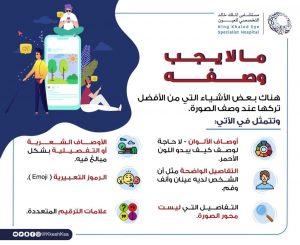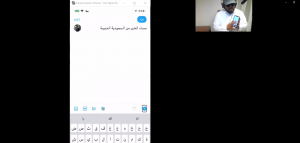Join a powerful, unprecedented alliance for better eye health for all.
Join IAPB-
Choose an alternate language here
Globally, there are 43 million people who are blind and 295 million people with moderate to severe vision impairment. There are 258 million people with mild vision impairment (Global Vison Atlas). In Saudi Arabia, there is a large community of with low vision and blindness that need vision rehabilitation services.
The idea of the Inclusive initiative at King Khaled Eye Specialist Hospital started with the outbreak of COVID-19; when a lot of awareness messages related to COVID-19 published by the Saudi Ministry of Health and other ministries on social media platforms were not accessible for people with visual disabilities.
The information was in the form of images or silent videos that the screen reader for the blind or visually impaired couldn’t recognize. Therefore, KKESH’s intervention to make messages inclusive for everyone in the Saudi society was crucial. Since KKESH’s official Twitter account had always taken into consideration its accessibility to the blind and visually impaired individuals since 2018, the “Awsefha” Twitter account (أوصفها) affiliated to the hospital seemed like the most reasonable idea during the pandemic.
We did the following to implement this:
Volunteers were trained in how to interpret infographics and silent videos.
Our Scope of Services were:

The hospital was able to implement the volunteers’ enthusiasm to serve people with visual impairment in describing a large number of photos and films. We were able to describe all awareness content that was published by the Ministry of health during the pandemic. We received great feedback from our visually impaired followers on describing the daily report issued by the Ministry of Health on the number of people with COVID-19 in the Kingdom, in addition to any important health guidelines.
